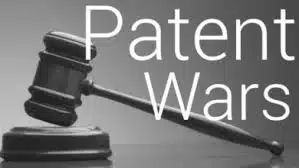Transaction Services
Patent & Technology Licensing
How Do I License a Patent Porfolio?
Licensing can be complex, so consider hiring a patent broker professional who specializes in intellectual property to help guide you through the process.
- Determine Licensing Strategy: Exclusive vs. Non-Exclusive - Decide whether to grant exclusive rights to one licensee or non-exclusive rights to multiple licensees. Field of Use: Specify whether the licensing will be limited to certain uses or markets.
- Monetary Royalty Structure: Determine if you will charge upfront fees, ongoing royalties, or a combination.
- Global Licensing: If applicable, consider the international aspects of your patents and how licensing might differ by jurisdiction.
Benefits of Patent & Technology Licensing
Our goal for the licensor is to identify the best available licensing opportunities. There are two alternatives to licensing: Patent licensing and enforcement if the patent is being infringed; and Technology licensing which is often referred to as technology transfer. Patent Licensing is often referred to as Assertive and likely requires litigation to enforce the patent owners rights. Technology Licensing is synergistic and often results in a win-win relationship between licensor and licensee.
Both of the above provide leverage for the monetization of the company IP assets, to deliver a return on invention.
Technology Licensing - TransactionsIP Approach
TransactionsIP employs a systematic and comprehensive approach to IP commercialization with its clients. Beginning with a thorough assessment of IP assets, leading to opportunity identification, TransactionsIP provides the technical and business expertise to identify the prospects by providing market and industry analysis, initiate contact with prospects, completely manage the transaction, and negotiate the best possible finalized licensing agreement for our clients. TransactionsIP provides an end-to-end outsourced service that is results focused and highly effective.
The following outlines the overall technology licensing campaign phases. TransactionsIP has used this approach successfully with many clients.
Systematic & Comprehensive Approach to IP Commercialization:
PHASE 1: THOROUGH ASSESSMENT OF IP ASSETS
- Define Objectives
- Optimize Core Technology
- Determine Valuation
PHASE 2: IDENTIFY PROSPECTS
- Market Research & Industry Analysis
- Define Optimum Exploitation Route to Markets
- Prioritize Prospects
- Recommend Action Plan
PHASE 3: LICENSING (SALES) STRATEGY
- Define Game Plan (strategy, options, tactics, etc.)
- Determine Deal Structure Licensing Fees & Royalty Targets
- Prepare Presentations & Collateral
PHASE 4: MANAGE THE TRANSACTION
- Contact Target Licensees & Set Meeting
- Conduct Negotiations & Licensing Support
- Sign Term Sheet (including terms and conditions)
PHASE 5: FINALIZE AGREEMENTS
PHASE 6: GENERATE REVENUES
View more information about IP Commercialization HERE.
Background & Environment
Intellectual property can be a company’s most valuable asset. But simply owning intellectual property is no guarantee of success. This is especially true among technology-based industries, in which technology developers need to find the most effective ways to leverage their intellectual property, and technology users need to understand how to most effectively obtain the intellectual property they need.
Technology licensing is a contractual arrangement in which the licensor’s patents, technology, know how, or other intellectual property may be sold or made available to a licensee for compensation that is negotiated in advance between the parties. It affords owners/licensors a viable means of maximizing revenue, while providing licensees with a cost-effective, lower risk access to the intellectual property of others. But whether licensing-in or licensing-out, the process is a complex one, involving, among other things, extensive market research, identifying prospects to sell or buy intellectual property, negotiating the best possible deal, and successfully managing the relationship. The compensation, or royalties, may be a lump sum royalty, a running royalty (royalty that is based on volume of production), or a combination of both. Patented Technologies are typically offered on an Exclusive, or Field of Use Exclusive, licensing basis.
Patent licensing often requires litigation enforcement of the owners patents versus a company which has infringing products in the marketplace. Patent litigation has been referred to as the sport of kings due the cost and time required for a successful outcome in the courts.
TransactionsIP can help clients determine which licensing program is best matched to their IP strategy and IP assets.
Patent Licensing - TransactionsIP Approach
 TransactionsIP approach to support a client’s patent Licensing campaign includes the following steps:
TransactionsIP approach to support a client’s patent Licensing campaign includes the following steps:
- Evaluate the Patent or Portfolio
- Assess Revenue Markets
- Match Claims to Infringers
- Reverse Engineer Products
- Determine Essential (Star) Patents
- Assess Adversely Held Patents
- Business / Financial Analysis
- Initiate Patent Enforcement & Licensing Program
Broker Licensing Support
The broker begins by analyzing the market potential of a patent (or patent portfolio) and determines the best monetization strategies for that patent (or portfolio) — whether it is licensing, enforcement or sale.
When it comes to licensing, a patent broker can help develop a campaign that typically includes evaluation, assessing revenue markets, identifying target products, matching patent claims to infringers or new product opportunities, preparing presentations for targets, and leading negotiations.
To license a patent, they will likely ask for a monthly retainer and a campaign success fee.
Fees
Projects are often based on a combination fee structure that includes a monthly campaign fee and a success fee percentage.
